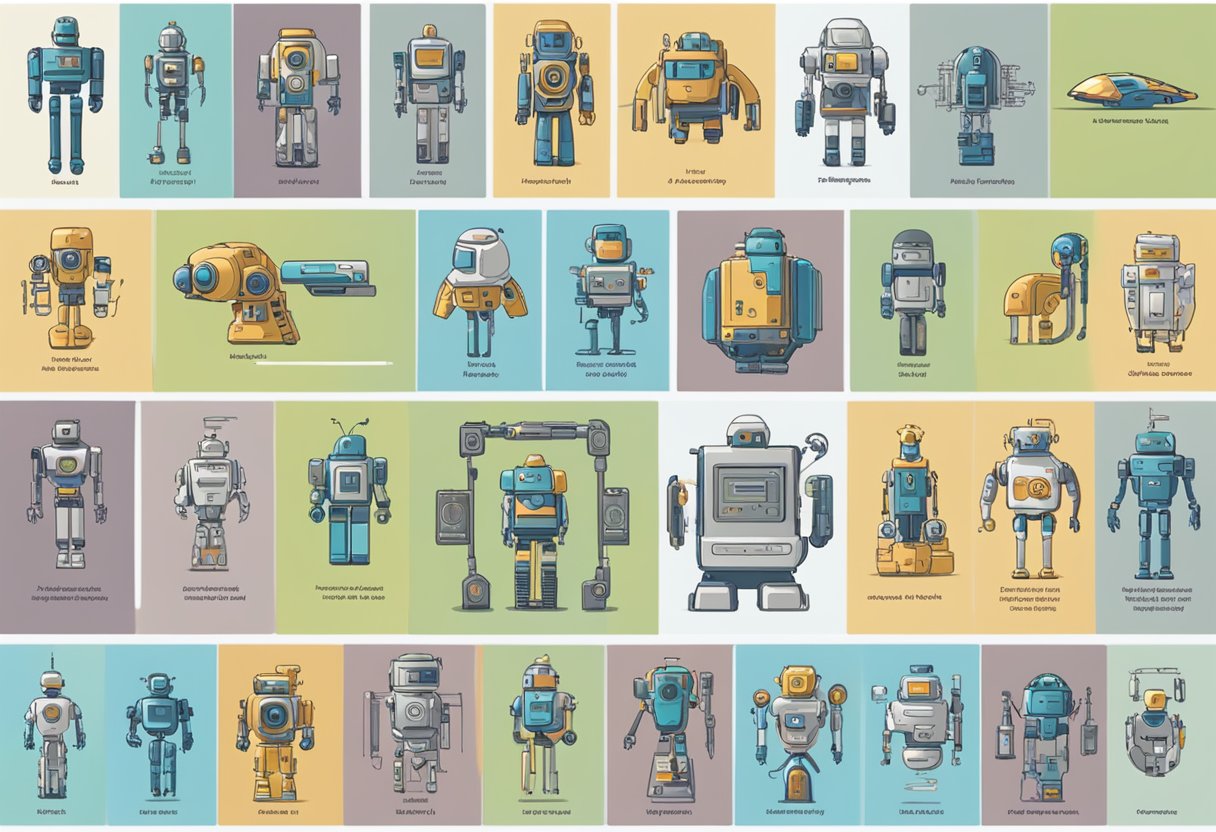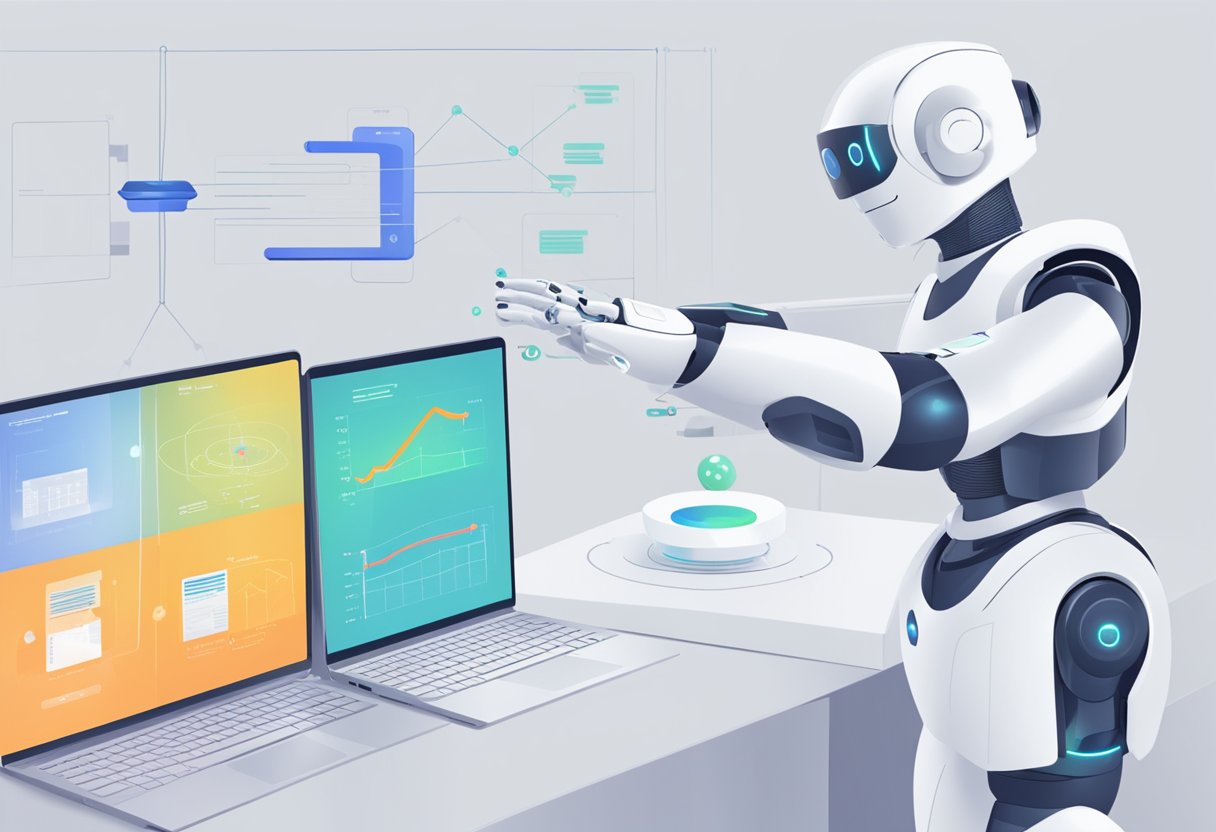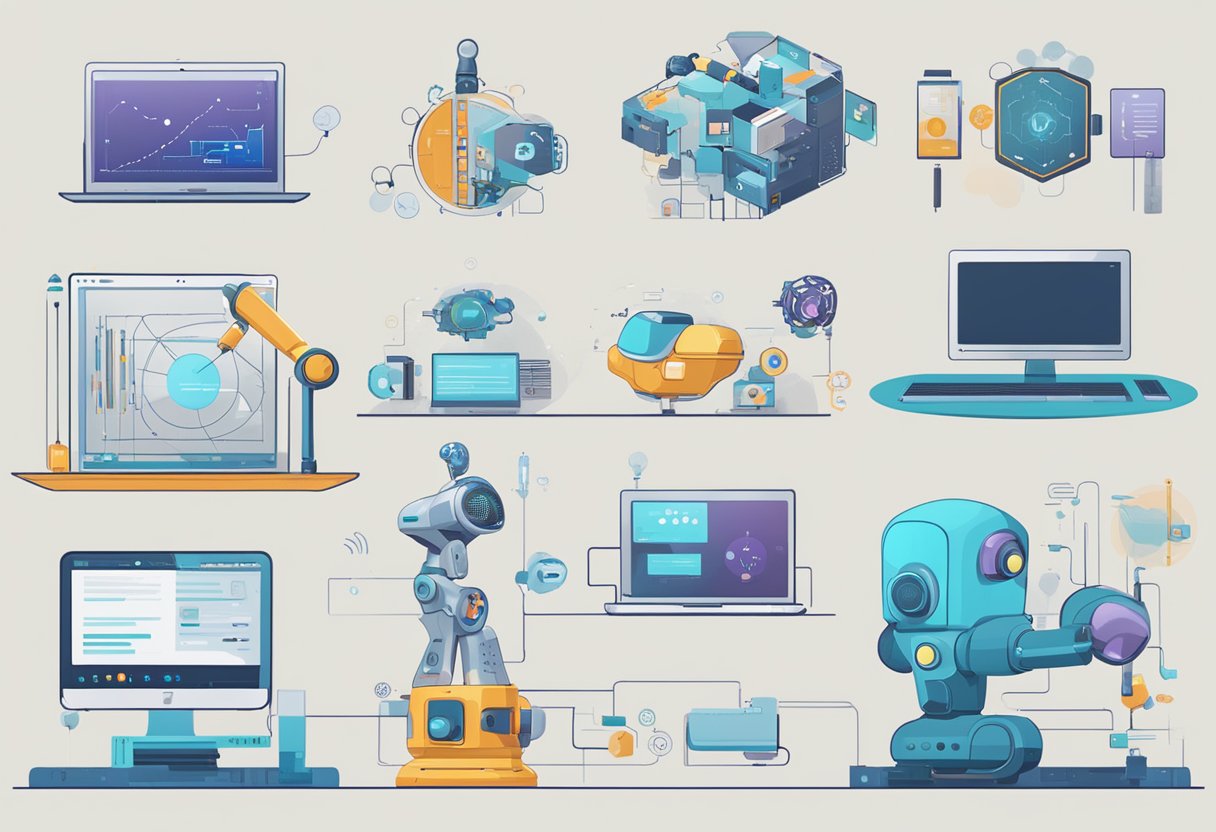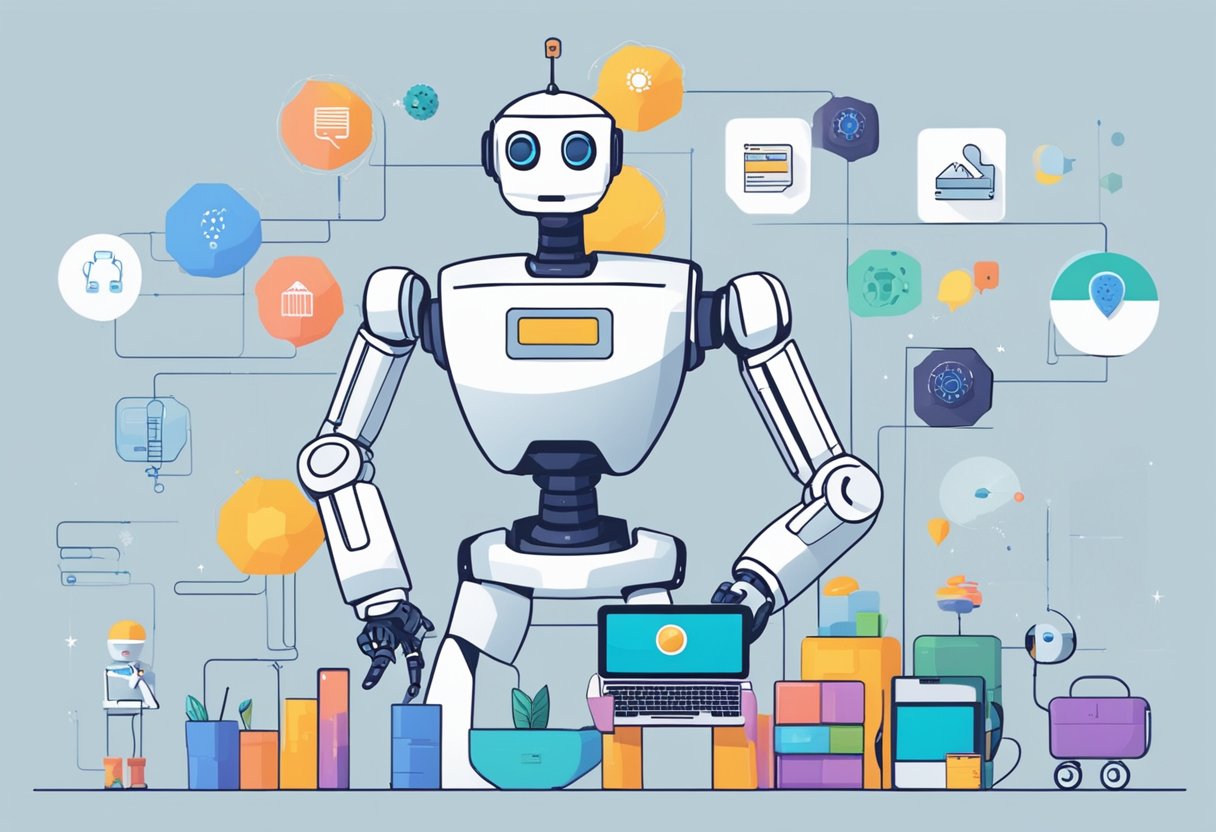Artificial Intelligence (AI) has evolved significantly from its nascent stages of simple programmed bots to complex self-learning systems capable of mimicking human-like decision-making and learning. Simple bots, essentially sets of automated scripts, have long been used to perform limited and repetitive tasks. However, the limitations of these bots’ capabilities led to the exploration and development of more sophisticated AI technologies.
As AI technology has advanced, it has given rise to a diverse landscape of adaptable and autonomous systems that can learn from their environment and experiences. These self-learning systems leverage data to continuously improve their performance without explicit instructions, marking a significant leap from the static nature of their predecessors. Key drivers of this transformation include improved algorithms, increased computational power, and the availability of large datasets.
Key Takeaways
- AI spans from basic bots to advanced systems that learn and adapt autonomously.
- Enhancements in algorithms, computing, and data availability propel AI advancements.
- The evolution of AI raises important considerations for practical applications and ethics.
Understanding AI Fundamentals
When exploring artificial intelligence, it’s essential to grasp its basics—from recognizing its definition and broad applications to understanding the different types of AI and their capabilities.
Definition and Scope
Artificial intelligence (AI), at its core, is the technology that enables machines to mimic human intelligence. This includes the ability to interpret data, tackle tasks, make decisions, and learn from experience. The scope of AI is vast, with applications touching various domains—from simple tasks like filtering emails to complex ones like driving autonomous vehicles.
Types of AI: Reactive, Limited Memory, Theory of Mind, and Self-Awareness
Reactive Machines: Reactive AI is the most basic type of artificial intelligence. These systems react to specific situations with pre-defined responses. They don’t store memories and therefore can’t use past experiences to inform current decisions—chess-playing computers are a classic example.
Limited Memory: AI with limited memory learns from the past by temporarily storing data and observations. Many of today’s self-driving cars use this AI form to make immediate decisions based on recent information, such as the speed and trajectory of nearby objects.
Theory of Mind: This advanced AI category refers to systems that theoretically understand emotions, people, and other entities have their own beliefs and intentions that affect the decisions they make. While the technology to realize theory of mind AI is still in development, it is expected to revolutionize interactions between AI systems and humans by providing deeper context.
Self-Awareness: The concept of self-aware AI represents a hypothetical peak in AI development. Such systems would be aware of their own existence and understand their own states and the emotions of others. They would not merely mimic human behavior but also have a genuine understanding of themselves and their world, though this type of AI is still in the realms of science fiction.
Developing AI Technologies
In the evolution of AI, development has now escalated to sophisticated techniques that involve teaching machines to learn from data and interact in human-like manners.
Machine Learning and Neural Networks
Machine learning is a cornerstone of AI development, requiring large datasets for training. These algorithms improve with practice, becoming more accurate in tasks such as image recognition or predictive modeling. Neural networks, particularly deep learning algorithms, mimic the human brain’s structure and function, allowing for more complex problem-solving capabilities. They’re integral to developing AGI (Artificial General Intelligence), which aims to perform any intellectual task that a human being can.
Natural Language Processing and Conversational AI
Natural Language Processing (NLP) encompasses a range of techniques including natural language understanding and generation, enabling machines to interpret and respond to human language. As a result, Conversational AI and chatbots have become more intuitive, flexible, and capable of maintaining context within conversations. These advancements are reshaping customer service and personal assistant applications, as they rely heavily on NLP to understand and fulfill user requests.
Robotics and Automation
Robotics integrates physical AI with sensors, control systems, and actuaries, allowing robots to interact with the real world. This field combines machine learning and domain knowledge to enable robots to perform a variety of tasks, from the mundane to the extremely complex. Automation uses robotics and AI to replace or augment human labor, notably in manufacturing and logistics, where precision and efficiency are paramount. The goal here is not just to replicate human actions but to enhance productivity and safety.
AI in Action: Applications and Benefits
Artificial Intelligence is transforming industries by enhancing customer service, streamlining processes for higher efficiency, and bolstering advancements in autonomy and security—resulting in significant ROI and improved customer experience.
Customer Service Enhancements
Chatbots and virtual assistants have revolutionized the way businesses interact with customers. They offer quick, contextual responses, leading to an efficient and satisfying customer experience. Retail giants, for instance, leverage AI to provide 24/7 support, addressing inquiries and concerns with precision.
- Benefits:
- Instant support, reducing wait times.
- Consistent responses, ensuring a high standard of customer service.
- Learning from customer interactions, improving over time for more personalized support.
Streamlining Processes for Efficiency
AI excels in integrating into existing systems to optimize workflows. They analyze large datasets swiftly, identifying patterns that can streamline operations. This leads to a notable efficiency gain. Financial firms utilize AI for real-time data analysis, helping them make informed decisions quickly.
- Key Efficiency Boosters:
- Automated repetitive tasks save time.
- Enhanced decision-making from accurate data processing.
- Integration with other systems for a seamless workflow.
Advancements in Autonomy and Security
Self-learning AI systems are at the forefront of enhancing autonomy and security. With capabilities such as facial recognition, they’re deeply involved in areas like public safety and personal device security. Through constant learning, these systems become more adept over time, making autonomous vehicles safer and personal electronics more secure against unauthorized access.
- Autonomy and Security Milestones:
- Smarter security systems capable of recognizing potential threats.
- Autonomous vehicles making real-time navigational decisions.
The Future of AI and Ethical Considerations
As AI technology advances, the line between tools and independent entities blurs. Innovations in self-learning systems promise to reshape how individuals interact with machines, raising the stakes for ethics and regulation.
The Rise of AGI and Self-Learning Systems
General AI, or AGI (Artificial General Intelligence), represents the frontier of AI research where machines will theoretically perform any intellectual task a human can. Self-learning chatbots and systems, capable of accelerating their own development without human intervention, are a step towards that future. OpenAI and other organizations are at the vanguard, working on AI that can learn from dialogue and improve upon their interactions. This form of self-learning AI not only carries the potential to revolutionize industries but also to provide more intuitive and personalized user experiences.
Ethics, Privacy, and Regulatory Challenges
With the rapid growth of self-learning AI, ethical considerations become paramount. As these systems learn from and communicate with users, concerns about privacy and misuse of data emerge. There’s a delicate balance in ensuring that AI respects personal boundaries and operates within a moral framework. This necessitates robust regulatory practices to govern how AI systems learn and interact, which in turn influences how companies like OpenAI design their self-learning chatbots. Moreover, the broader implications of AI decision-making underscore the need for a transparent ethical code that machines should adhere to as they grow more autonomous.




